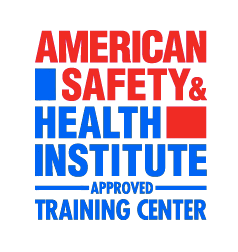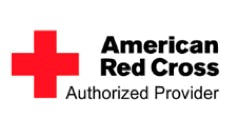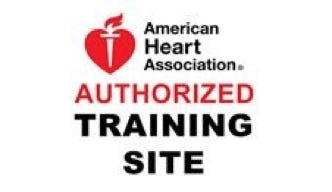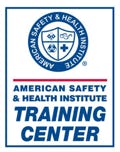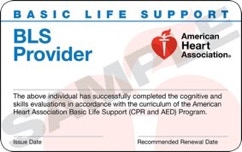This information is for our layperson classes. If you are a Healthcare Provider please visit our BLS Study Guide.
Memorizing the CPR Summary of Steps is what you need to memorize to successfully complete any of our classes.

Before attending to anyone else, make sure it is safe for you to get involved! Always call 911 if you have questions or feel you don’t know how to handle a situation.
Definition of “First Aid” = First assistance rendered to a patient in any injury/illness emergency situation.
Definition of “Duty to Act” = No rescuer is ever required to render aid, based solely upon the fact that he/she is trained to do so. However, workplace expectations may state that a student is required to assist, as part of his job duties, in an emergency situation.
Persons choosing to assist a patient are protected in most States from successful prosecution by “Good Samaritan Laws”. These laws state that if the rescuer: “Does what he/she has been trained to do”, “to the best of his/her ability”, “in the best interest of the patient” and “does not receive compensation for his/her assistance” that person may not generally be successfully prosecuted for issues arising from that assistance. (Note: Healthcare Providers rendering aid while performing their jobs are typically covered by their employer’s liability insurance.)
1) If considering treatment of an adult, tell the patient you are able to assist and request permission to do so. A competent adult may refuse assistance – in which case the rescuer may call 911 and request assistance from EMS providers. (An adult would not be considered competent while exhibiting “altered mental status”, in which case the rescuer should call 911 and describe the situation.)
When considering treatment of a minor, attempt to obtain permission from immediately available parents/guardians. If no one is with the minor, assume you have consent to treat him.
2) To determine whether assistance is necessary, rescuers should attempt to “find the problem”. If the patient is conscious, ask the patient.
If the patient is not conscious, or cannot respond, ask bystanders or family members for information and follow these steps:
A) Determine scene safety.
B) Determine the level of the patient’s response.
C) Is the patient breathing normally?
D) If yes, should 911 be called?
E) If no, call 911 and get an AED.
F) Check for and correct immediate life threats. (Control profuse bleeding; begin CPR.)
G) If no immediate life threats, treat secondary issues. Look for medic alert jewelry; get bystander information.
3) Most pediatric fatalities are the result of accidents and/or injuries. Prevention is crucial!! Quick treatment is also critical because children often show few symptoms for serious issues until they become life-threatening.
All children should ride in approved automobile child restraints, including booster seats, until they are at least 8 years old, weigh 65 pounds or are a minimum of 4’ 9” tall. If the child can sit on the car seat with his back touching the back of the seat and his knees bend at the edge of the car seat (it is not necessary for his feet to touch the car floor) then he can safely be restrained in the vehicle’s lap/shoulder belt. (Serious internal injuries can occur if a child whose knees do not bend at the edge of the car seat is restrained solely in a lap/shoulder belt system.)
When rendering First Aid, the best way to prevent potential contamination is to wash your hands frequently and wear gloves and other personal protective equipment. To be effective at preventing contamination, gloves should not only be worn but should also be removed properly. Improper glove removal can lead to inadvertent contamination. Always put on gloves before beginning treatment. Wash the wounded area with soap and running water if possible, to clean the area and determine the scope of the injury.
To safely remove gloves:
1. Grasp the palm of one glove between the thumb and forefinger of the other gloved hand. Pull that glove straight off over the fingers, pulling the hand out of the glove. Keep the removed glove in the still-gloved hand.
2. Completely envelop the removed glove in the gloved hand so no parts of it are hanging loose to contribute to potential contamination.
3. Put two fingers under the cuff of the back side of the remaining glove.
4. Pull that glove off the hand, over the closed fist, being careful not to touch any outside parts of the glove or the cuff of the glove.
5. Grasp the removed gloves only near the fingers, not near the cuff, and dispose of properly.
6. Used gloves may be disposed of in a biohazard bag or a Ziploc type bag which can be sealed; or they may be sealed into a plastic “grocery type” bag which is then sealed into another “grocery type” bag for disposal with standard trash.
MEDICAL EMERGENCIES
HEART ATTACK - Symptoms:
• Chest pain – dull, crushing, burning
• Back pain – upper or lower
• Pain in either arm
• Pain that radiates from one area to another – ie. back or chest to neck and/or jaw
• Nausea
• Vomiting
• Shortness of breath or trouble breathing
• Cold, clammy sweat
• Feeling of fullness or indigestion
• Mental distraction or “disconnect”
• Increased foot or hand pain (diabetics)
• Denial
1. Always call 911 for any suspected heart attack – time is critical!
2. Have the patient sit comfortably or lie down and rest.
3. Ask the patient to cough forcefully at regular intervals.
4. If the patient is conscious and can swallow, have him/her chew and swallow one non-coated 325 mg aspirin tablet (or two to four 81 mg “baby aspirin”).
5. Be prepared to start the steps of CPR and use an AED.
STROKE – Symptoms:
• Loss of balance
• Paralysis or loss of muscle control on one side of the body
• Facial droop
• Slurred, unintelligible or inappropriate speech
• Altered mental status
• Sudden severe headache with no known cause
• Blurred vision
• Eye pain
1 Always call 911 for a suspected stroke! Treatments must begin within 3 hours of the first onset of symptoms.
2 Never administer aspirin if a stroke is suspected.
3 Be prepared to start the steps of CPR and use an AED.
DIABETIC EMERGENCY – Symptoms:
• Altered mental status – patient acting confused, combative, dazed, excessively tired
• Loss of consciousness
• Excessive thirst
• Excessive urination
• “Fruity” or “alcohol” smelling breath
• Seizures
Diabetic emergencies indicate low blood sugar and can be life threatening!
If the patient is conscious and can swallow, give him/her something with sugar to drink and/or eat – fruit juice, soda (not diet), sugar or honey packet, cake icing, candy.
1 Call 911 if the patient loses consciousness or does not respond well to sugar.
SEIZURE
A seizure is a symptom of another problem. Seizures can be a result of: fever, head injury, infection, seizure disorders (ie. Epilepsy), heat stroke, stroke, poisoning and low blood sugar.
1 Call 911! Do not restrain anyone seizing.
2 Do not put anything in the person’s mouth.
3 Move objects away from the person so they do not injure themselves.
4 Allow time for the person to recover normal physical and mental capabilities.
5 If the seizure lasts for more than 5 minutes or there are more than 5 seizures sequentially, be prepared to begin CPR.
ASTHMA
Asthma attacks can be triggered by: extreme temperatures (hot/cold), exertion, allergies and stress.
1 Seat the person comfortably upright, away from the attack trigger if possible.
2 If trained, assist the person with his/her prescribed inhaler.
3 Call 911 if the person continues to have trouble breathing!
CHOKING
Choking is a fairly common occurrence in both children and adults. You might suspect an adult or child is choking if the person:
• Cannot speak
• Cannot cough loudly
• Makes the choking sign (holds his neck with one or both hands)
• Has bluish lips or skin
If you suspect the person is choking ask, “Are you choking?” If the person speaks, ask him to cough loudly. If the person nods, “Yes”, tell him you can help him; if he’s an adult, ask his permission to help. “I can help you, is it OK if I help?”
With the person’s permission:
1 Kneel or stand braced behind the person.
2 Wrap your arms around the person’s waist.
3 Make a fist with one hand and place it, thumb-side down, slightly above the person’s belly button, but well below the breast bone.
4 Grasp that fist with your other hand and give firm upward thrusts into his abdomen.
5 Give thrusts until the object is forced out and he can breathe, cough, or talk, or until he stops responding.
If the person stops responding:
1 Lower him gently to the floor and call for help.
2 Have someone call 911 and get an AED.
3 Begin the steps of CPR.
4 Do 30 Chest Compressions.
5 Open the airway – each time you open the airway to give breaths, open the mouth to look for the object. If you see the object and can safely remove it, do so. If you don’t see the object, or can’t safely reach it, continue with the steps of CPR.
6 Give 2 Breaths (re-positioning the head after the first breath, if it does not go in.)
7 Do 30 Chest Compressions.
8 Repeat the sequence of 30 compressions and 2 breaths (checking the person’s mouth for the object before giving breaths) until help arrives or you can use the AED.
If you cannot get your arms around the person’s waist to do abdominal thrusts (the person is very large or in the late stages of pregnancy):
• Wrap your arms around the person’s chest and give chest thrusts – using the same fist technique, place your fist in the center of the chest (same positioning you use for chest compressions) and pull straight back.
You might suspect an infant is choking if he:
• Cannot cry
• Cannot make sounds
• Makes only a high-pitched squeaky sound
• Has bluish lips or skin
To relieve the choking, do a series of 5 back slaps, followed by 5 chest thrusts:
1 Hold the infant face down on your forearm.
2 Support the infant’s head/jaw in your hand.
3 Sit or kneel, supporting your forearm on your lap or thigh.
4 Keep the infant’s head lower than his torso.
5 Using the heel of your other hand, deliver a series of up to 5 back slaps, mid-way between the infant’s shoulder blades. (Be careful not to deliver slaps too low – below the level of the infant’s shoulder blades.)
6 If the object does not come out, support the back of the infant’s head and turn the infant over onto your other forearm.
7 Support your forearm on your thigh or lap, being careful to keep the infant’s head lower than his torso.
8 Using two fingers of your other hand, do up to 5 chest thrusts, with fingers on the center of the breastbone, just below the nipple line, exactly the way you do chest compressions for CPR.
9 Repeat sequences of up to 5 back slaps, and up to 5 chest thrusts, until the object comes out or the infant stops responding.
10 If the infant stops responding call 911 and start the steps of CPR.
Begin the steps of CPR:
1 Do 30 chest compressions, using two fingers on the infant’s breastbone, just below the nipple line.
2 Open the airway – each time you open the airway to give breaths, open the mouth to look for the object. If you see the object and can safely remove it, do so. If you don’t see the object, or can’t safely reach it, continue with the steps of CPR.
3 Give 2 Breaths (re-positioning the head after the first breath, if it does not go in.)
4 Do 30 Chest Compressions.
5 Repeat the sequence of 30 compressions and 2 breaths (checking the infant’s mouth for the object before giving breaths) until help arrives or you can use the AED.
Encourage anyone who has choked to consult a healthcare provider after the incident!! Infants who have choked on a hard object should ALWAYS see a healthcare provider!!
POISONING
Poisons can be ingested, inhaled or injected. Symptoms can include:
• Nausea or vomiting
• Pain
• Trouble breathing
• Pinpoint or dilated pupils
• Excessive eye tearing, nose running, excessive salivation, urination, defecation
• Seizures
• Loss of consciousness
1 If the poison was ingested, find out how much and what was ingested.
2 Call Poison Control at: 1-800-222-1222.
3 Call 911 if the patient experiences trouble breathing, seizures, loss of consciousness or excessive bodily fluid output.
SHOCK
Shock may be caused by internal bleeding, low fluid volume or other problems and usually results in inadequate blood circulation throughout the body. Untreated shock can be fatal! Symptoms include:
• Weakness
• Excessive thirst
• Nausea
• Vomiting
• Dizziness
• Cold, clammy sweat
• Pale skin, possible bluish color around the lips
• Disorientation
• Seizures
• Loss of consciousness
1 Call 911 immediately for any suspected shock patient!
2 Have the person lie down and rest.
3 Maintain body temperature – cover the person with a blanket if necessary.
4 Maintain an open airway.
5 Maintain constant verbal communication with the patient.
6 Be prepared to start the steps of CPR if needed.
ANAPHYLACTIC SHOCK
Also referred to as “allergy shock”, this is caused by contact with substances to which the patient is highly allergic. Common allergens include: insect bites or stings; food and spices; chemicals; medications. Signs and symptoms can include:
• Skin rash
• Hives
• Itchiness
• Swelling of the face, tongue, eyelids
• Trouble breathing
• Respiratory arrest
Call 911 if the patient experiences any trouble breathing!
1 Assist the patient in the use of his prescribed Epi-Pen (epinephrine auto-injector), if needed.
2 Note the time the injection was given and inform EMS upon their arrival.
Important Note: Medication in the Epi-Pen may only control symptoms for 20 minutes! 911 should always be called when any person uses an epi-pen.
INJURY EMERGENCIES
BLEEDING
1 Apply direct pressure to the wound. Maintain with a pressure bandage if needed.
2 Elevate the area, if possible.
3 Apply a cold source to the area. (Never apply cold to bare skin.)
4 Apply pressure to pressure points (at the brachial and femoral arteries) if necessary and possible.
5 If bleeding still cannot be controlled, apply a tourniquet to the limb above the wound and record the time it was placed.
• If bleeding does not stop, you have applied a tourniquet, or the patient has lost more than 16 oz. of blood (1 ½ soda cans), call 911!
• Stop a nose bleed by pinching the bottom of the patient’s nostrils and having him lean his head forward. If bleeding does not stop in 15-20 minutes, seek medical help.
• Treat a tooth knocked out by transporting the patient, with the tooth in a cup of milk, to a dentist or hospital. Stop bleeding from the tooth socket with pressure over a gauze pad.
BURNS
• First degree burns (red, painful skin) – If small (no larger than the size of the patient’s palm), flush with cool water and cover with a dry, sterile dressing if desired.
• Second degree burns (red, blistered/weeping skin) – Cover with a dry, sterile dressing. Do not treat with water.
• Third degree burns (white or black charred skin) – Cover with a dry, sterile dressing and seek medical help. Do not treat with water.
• Dry chemical burns - Brush off as much substance as possible, remove any affected clothing and jewelry, flush with water for 20 minutes.
• Liquid chemical burns - Remove any affected clothing and jewelry, flush with water for 20 minutes.
• Never apply butter, mayonnaise, petroleum jelly or other barrier substance to any burn - it traps the heat inside the skin!
• Electrical burns – Don’t touch the patient with anything until the power is off! Turn off power supply. Treat for potential cardiac, internal organ and spinal injuries. Seek medical evaluation.
SPRAINS and STRAINS
R – Rest the affected area. Remove jewelry and/or shoes near affected areas.
I – Ice or cold source should be applied, 20 minutes on, 20 minutes off, to reduce swelling and pain.
C – Compression wrap should be applied to reduce swelling and limit movement of the injured area.
E – Elevate the injured area above the level of the patient’s heart, if possible.
Note: Wrap from below, to above, a joint. Do not apply cold sources directly to bare skin.
DISLOCATIONS and FRACTURES
I – Immobilize the area.
A – Activate EMS – Call 911 for suspected large bone, pelvic or hip injuries.
C – Care for potential shock.
T – Treat other injuries.
Note: Do not reposition or re-locate a fracture or dislocation!
HEAD, NECK and SPINAL INJURIES
Symptoms may appear immediately, or be delayed hours or days. They can include:
• Confusion or altered mental status
• Headache
• Nausea
• Vomiting
• Loss of balance
• Tingling or loss of feeling in one or more areas of the body
• Cold, clammy sweat
Never move a person with suspected neck or back injuries unless they are in a life threatening situation. Stabilize their head to restrict all movement and call 911!
ENVIRONMENTAL EMERGENCIES
HEAT EMERGENCIES
Heat Cramps – Symptoms:
· Red, moist skin
· Individual muscle cramps
· Generalized muscle cramping
1. Remove the person from the heat.
2. Give the person water to drink.
3. Massage affected areas.
4. Do not apply a cold source directly to cramped muscles.
Heat Exhaustion – Symptoms:
· Red, moist skin OR possible cool, clammy skin
· Nausea
· Vomiting
1. Remove the person from the heat.
2. Provide water or other fluids.
3. Cool the person by removing clothing, wetting their skin with water, fanning them.
Heat Stroke – Symptoms:
· Red, dry (or possibly moist) skin - person no longer able to actively sweat
· Altered mental status
· Confusion
· Rapid pulse
· Nausea
· Vomiting
· Seizures
· Trouble breathing
· Loss of consciousness
1. Call 911 – heat stroke is life threatening!
2. Remove the person from the heat.
3. Aggressively cool the patient by removing clothing, wetting their skin with water, immersing them in cool water, fanning them and/or applying ice packs to the back of their neck, in their armpits and in the groin area.
4. Provide fluids if the person is conscious and can swallow.
COLD EMERGENCIES
Frostbite – Symptoms:
· White, waxy or yellowish skin
· Numbness
· Tingling or burning
· Loss of sensitivity to touch
1. Remove the person from the cold.
2. Do not rub the affected area(s).
3. Re-warm the affected area in lukewarm water if there is no danger of re-freezing.
4. Apply a dry, sterile dressing.
5. Replace cold, wet clothing with warm, dry clothing and blankets.
6. Seek medical attention.
Hypothermia – Symptoms:
· Shivering
· Slurred speech
· Stumbling
· Pale or bluish skin
· Confusion
1. Remove the person from the cold.
2. Replace cold, wet clothing with warm, dry clothing and blankets.
3. Warm the person gradually using heating pads, blankets or towels warmed in a clothes dryer, or hot packs in the armpits and groin area.
4. Seek medical attention.
5. Call 911 if the person loses consciousness.
SNAKE or SPIDER BITES – Symptoms:
• Red, inflamed skin
• Possible visual puncture wounds
• Pain and swelling at the site of the bite
• Nausea
• Vomiting
• Trouble breathing or rapid breathing
• Treatment
1 Wash the area with soap and water.
2 Apply a “light”pressure bandage to the entire limb (if limb is bitten).
3 Call 911 or go immediately to the closest hospital emergency room.
4 Do Not cut the wound or attempt to “suck out” the venom.
5 Do Not attempt to catch or kill a snake. Move away.
6 Give a description of the snake to the hospital.
Note: Assume all snakes are poisonous!
HUMAN or ANIMAL BITES
• If the skin is broken, seek medical help as soon as possible.
• If the bite is from a wild or domesticated mammal, consider rabies exposure.
• Attempt to determine (ask the owner) if a domesticated animal has been vaccinated against rabies.
• Describe the behavior of a wild animal to the hospital.
TICK BITES
Ticks must be embedded for 2 to 12 hours in order to transmit diseases.
• Remove an attached tick by grasping its head with tweezers, close to the skin, and pulling it straight out.
• Wash the area with soap and water.
• Save the tick by taping it on to a file card or piece of paper.
• Watch for flu-like symptoms or a “bulls-eye” rash
• If either occurs, seek immediate medical assistance, including diagnostic blood tests.
Note: The classic “bulls-eye” rash, indicative of Lyme Disease, may appear any time after exposure, or not at all. Blood tests to determine positive exposure may not be accurate until 2-3 weeks after exposure. If a first blood test is negative for Lyme exposure, go back for an additional blood test 2-3 weeks after the first. Check with your physician for information about Lyme Disease vaccines.
JELLYFISH STINGS
Rinse liberally with vinegar for at least 30 seconds, as soon as possible. After rinsing, immerse the area in hot water – as hot as the patient can tolerate - or apply a heat pack for 20 minutes to reduce pain
(These materials were created as a review/study guide by Rescue One Training for Life, Inc. and are not a product of, nor endorsed by, the American Heart Association.) ©Rescue One Training for Life, Inc. 2010
The American Heart Association strongly promotes knowledge and proficiency in BLS, ACLS, and PALS and has developed instructional materials for this purpose. Use of these materials in an educational course does not represent course sponsorship by the American Heart Association. Any fees charged for such a course, except for a portion of fees needed for AHA course materials, do not represent income to the Association.

